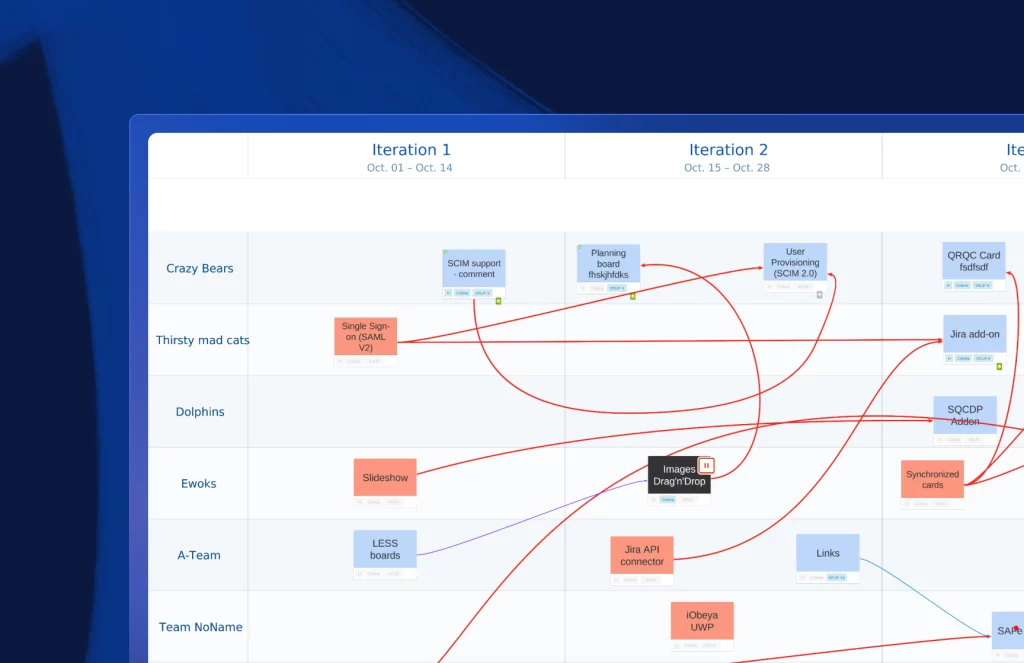Hey, let’s start your
iObeya journey!
What is PI Planning?
What are the benefits of PI Planning?
There are numerous benefits associated with PI Planning, which can be grouped into four different categories:
- 1. Team alignment: PI Planning allows all project team members to understand the objectives of the upcoming increment and collaborate towards a common direction.
- 2. Dependency management: By gathering all stakeholders, PI Planning facilitates the identification and management of dependencies between different features or components of the project.
- 3. Estimation and planning: During PI Planning, project teams estimate the work required for each task, facilitating planning and enabling more informed decisions regarding timelines and resources.
- 4. Transparency and visibility: PI Planning promotes transparency by enabling all stakeholders to understand priorities, challenges, and areas of improvement for each other.
What are the different stages of PI Planning?
1st stage – Preparation: Prior to the meeting, the project team must ensure that all topics to be discussed are clearly defined, and the necessary information is readily available.
2nd stage – Objective setting: The team sets the objectives for the upcoming increment based on product priorities and customer needs.
3rd stage – Iteration planning: The team breaks down the work into smaller iterations, also known as batches, and estimates the time required for each iteration.
4th stage – Dependency management: Dependencies between tasks or features are easily identified, and the project team manages them to avoid bottlenecks during iterations.
5th stage – Adjustment and adaptation: Based on the previous stages, the project team may find it necessary to reassess objectives, priorities, or estimates due to constraints or new information.
Toward Virtual PI Planning
PI Plannings have also undergone transformation due to the COVID-19 pandemic.
Prior to the pandemic, PI Plannings were typically conducted in person, with all team members gathering in the same room. This face-to-face communication fostered interactions among the project team members. However, the health measures implemented during the global pandemic necessitated a quick adaptation, leading to the adoption of virtual PI Plannings.
The transition from physical to virtual PI Plannings was facilitated by tools such as iObeya, which promotes Visual Management. Schneider Electric has testified to this transition towards virtual rituals
The digitalization of PI Plannings presented several advantages, including:
- Continuity of business activities and project progress
- Adoption of digital tools and technologies, resulting in greater flexibility and efficient remote collaboration. Notably, iObeya has gained popularity due to its ease of use and ability to replicate physical rituals.
- Substantial cost savings on team transportation expenses, as the project team can now work remotely under excellent conditions.
In conclusion, PI Planning has become an essential practice in the Agile world for teams working on complex and evolving projects. By facilitating coordination, alignment, and planning, PI Planning allows teams to stay focused on their objectives and improve productivity. Through PI Planning, organizations can enhance their agility, reduce risks, and increase the likelihood of successful project completion. Previously reliant on paper, PI Planning is becoming increasingly digital for hybrid use







